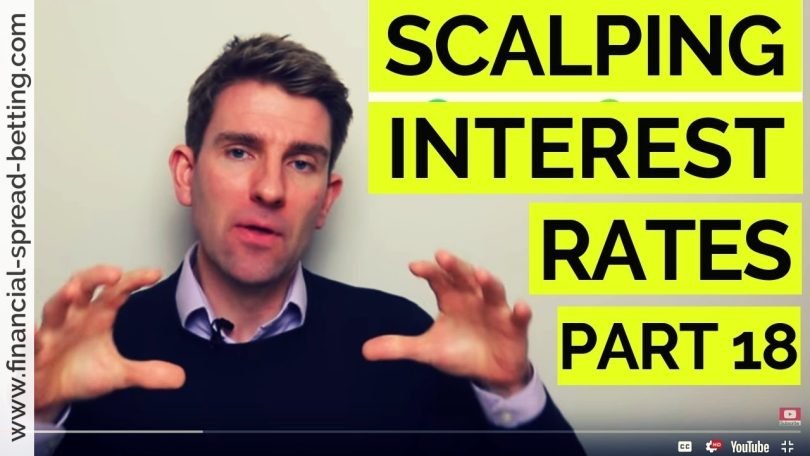Q. How does one bet on interest rates?
A: Lately, with concerns on the economy and financial turmoil in particular interest rates have been steadily falling but this can quickly change if there are worries over inflation which would prompt a rise. The most direct way to bet on interest rates is on the announcements themselves.
Suppose a spread betting provider like Trade Nation believes the next cut will be 25 basis points, it could for instance quote a bid-offer spread on a cut of 24/26. The client might expect 50 bps, and so buy the bet at 51 at £10 a point.
If there happens to be 25 bps cut, the client would lose £10 – the difference of 26 to 25. If there is a 50 bps cut, the client stands to gain £240 – the difference of 26 to 50, or 24 points at £10. But if there happens to be no rate cut, the client stands to lose £260 – the difference of 26 to 0, or 26 points at £10.
Another common way to bet on interest rates is via gilts or short sterling contracts which are affected by interest rate movements. Spread trades on interest rate futures are particularly adaptable for holding a position for longer periods. Trade Nation quotes the March 2009 short sterling contract at 94.15. So, if you think interest rates will be lower than 5.85 per cent at that time, you could buy the interest rate future in a spread bet. Note that the value of the short sterling contract is constantly fluctuating and doesn’t just depend on the Bank of England changing its rates. It reflects the market’s sentiment of what is going to happen to interest rates levels in the future which tends to change as news and economic figures become available. Gilt trading is also a way to spread bet on longer-term interest rates. More information on Interest Rates Spread Betting is available here
Q. Tell me more about spread trading long-term interest rates…
A: Long term interest rates are reflected in the price of government bonds. A government bond is a fixed interest security. Thus, if interest rates rise, you can do better with your money and so you would sell bonds. The price of bonds would go down to reflect this.
If interest rates falls, that nice, safe fixed interest bonds looks mighty attractive as a home for your money, and so you would buy bonds. The price of bonds rises to reflect this.
Bonds prices are therefore a good indicator of people’s expectations regarding long-term interest rates. Such bonds are also known as ‘guilt edged’ securities, or ‘gilts’. In the USA they are known as T-bills (Treasury Bills) or T-bonds.
The prices for treasury bills are quoted as a number followed by a certain number of 1/32nds. Strangs, but true.
Therefore a typical price is 110 – 12. This translates as 110 and 12/32nds.
Example: Selling the US T-bond.
You believe that long-term interest reates in the USA will rise. this means that you believe the price of T-bonds will fall (money leaves T-bonds for higher interest havens). So you decide to SELL the March T-bond. You call for a price and are quoted 110 – 08/110-16. That’s a spread of 8/32nds. You SELL at 110-08, $20 point. The deposit is $20 x 75 = $1500, payable to cover your bet (the deposit factor for this transaction is 75).
Interest rates fall slowly, and the bonds rise to reflect this. You bet wrong. You decide to jump ship when the price hits 112 – 11 (112 and 11/32nds) Your losses are:
Opening position: 110-08
Closing position: 112-11
Point difference: 67 (one point = 1/32nd) @ $20/point = $1340.00
Q. What does the expression ‘Short Sterling’ mean, exactly?
A: Shorthand for ‘Interest rate (LIBOR – London Interbank Offered Rate) on a short-term (3-month) sterling deposit commencing on the 3rd Wednesday in the month for which the price is quoted. For example, the MAR 07 Short Sterling might be quoted as 97.000, implying that the market forecast for LIBOR on the 3rd Wednesday in March 2008 is 100-97=3%. Short sterling futures (which indicate the expected interest rate at some point in the future) provide a good way of speculating on interest rates with most spread betting providers making a market in them. More information on the Short Sterling contract available here
Q. Are the financial futures markets reliable predictors of the future?
A: The short answer is no. I have seen plenty of graphs mapping implied interest rates against what actually happened and there are big differences. As in any market, for example government bonds, the futures tend to overexaggerate what happens in any direction. They don’t really replicate the “jumpiness” of real interest rates, they tend to show a far smoother curve. It is the unpredictability of the magnitude of the rate moves that can catch the futures out, if there is a 50% chance of a half a % move and a 50% chance of a quarter point move, the future will show a 0.375% move as the most likely course.
All we can really say is that low interest rates don’t tend to go on for ever, or do high interest rates- their very function is to bring the inflation rate back to around 2.5% and so if you add on a fudge factor based on 4% real inflation gap you should say that in the long term interest rates will probably be around 5-6%. So if interest rates go down to 2% borrow a lot for a long time. If interest rates go up to 15% buy government bonds.

